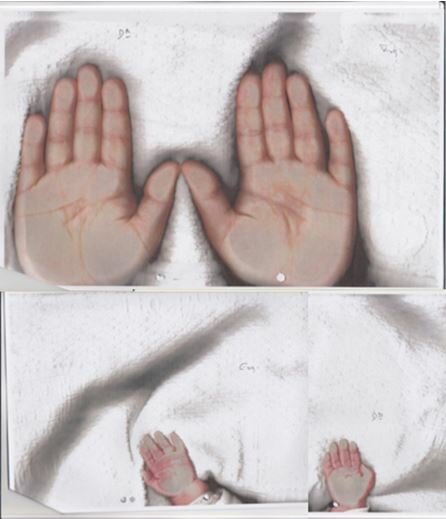Digit ratio (2D:4D) in newborns: Influences of prenatal testosterone and maternal environment
T. Ventura, M.C. Gomes, A. Pita, M.T. Neto, A. Taylor
Early Human Development, Volume 89, Issue 2 , Pages 107-112, February 2013
Abstract
Introduction
The 2D:4D digit ratio is sexually-dimorphic, probably due to testosterone action through the perinatal period. We characterize the 2D:4D ratio in newborn (NB) infants, in between the pre- and postnatal surges of testosterone, and relate it to the mother’s 2D:4D and to testosterone levels in the amniotic fluid (AF).
Subjects and methods
Testosterone was assayed in samples of maternal plasma and AF collected at amniocentesis. Shortly after birth, 106 NBs and their mothers were measured for 2D:4D ratio.
Results
NB males had lower mean 2D:4D ratios than females but this dimorphism was significant only for the left hand (males: 0.927; females: 0.950; p=
0.004). Mothers who had sons had lower 2D:4D ratios than those who had daughters and the mother’s 2D:4D were higher than those of NBs regardless of sex. Both hands of NB females were negatively correlated with AF testosterone and positively correlated with the mother’s 2D:4D, but males showed no significant associations. Maternal plasma testosterone also showed a negative weak correlation with NB’s digit ratio in both sexes.
Conclusions
Sexual dimorphism at birth was only significant for the left hand, in contrast with reports of greater right hand dimorphism, suggesting that postnatal testosterone is determinant for 2D:4D stabilization. The lower 2D:4D ratios in mothers who had sons support claims that hormone levels in parents are influential for determining their children’s sex. NB female’s digit ratio, but not males’, was associated to the level of AF testosterone. The mother’s 2D:4D ratios were positively correlated with their daughters’ 2D:4D, but the same was not observed for male NBs, suggesting that prenatal testosterone levels in male fetus lead their 2D:4D ratios to stray from their mothers’ with high individual variability.
© 2012 Elsevier Ltd.
Read Full Article
Additional Information:
The 2D:4D digit ratio is a sexually-dimorphic biomarker, possibly associated with perinatal testosterone action, which we expect to help in the prediction of pathology and behavior later in life, facilitating early screening of individuals at risk. We have examined 2D:4D in newborns (NBs) and their mothers, at a time in between the pre- and postnatal surges of testosterone.
Our study reports associations between amniotic fluid testosterone and 2D:4D in a larger sample than previous studies, and also, for the first time, between maternal gravid testosterone and 2D:4D. The results are generally supportive of an association between prenatal testosterone, particularly in females, and also help to clarify some questions about the dynamics of prenatal testosterone, including its fetal origin. We found dimorphism in 2D:4D of newborn infants a few hours after birth. As expected, boys had lower 2D:4D than females, but we also found a large overlap between sexes and our findings are suggestive of genetic versus environmental effects as the mothers 2D:4D tended to be positively related to the 2D:4D of their children (significant for girls) and there was a tendency for 2D:4D to be negatively related to testosterone in the amniotic fluid (significant in girls only) and the mothers serum (not significant).
Differences between male and female NBs were higher in the left hand, suggesting greater genetic influence at birth, and that 2D:4D stabilization should involve postnatal testosterone action, mainly in the right hand and more in boys than girls. Our hypothesis corroborates a previous finding by J Manning et al (HR 1998, 13:3000-3004), whereby the right hand dimorphism was less pronounced in children than in adults. In our study, digit ratio 2D:4D in NBs was smaller than their mothers, and these also corroborate the increase with age found by McIntyre and colleagues (PRS 2005,272:1473-1479; AJPA 2006, 129:143-150) and by Knickmeyer and colleagues (HB 2011,60(3):256-63).







